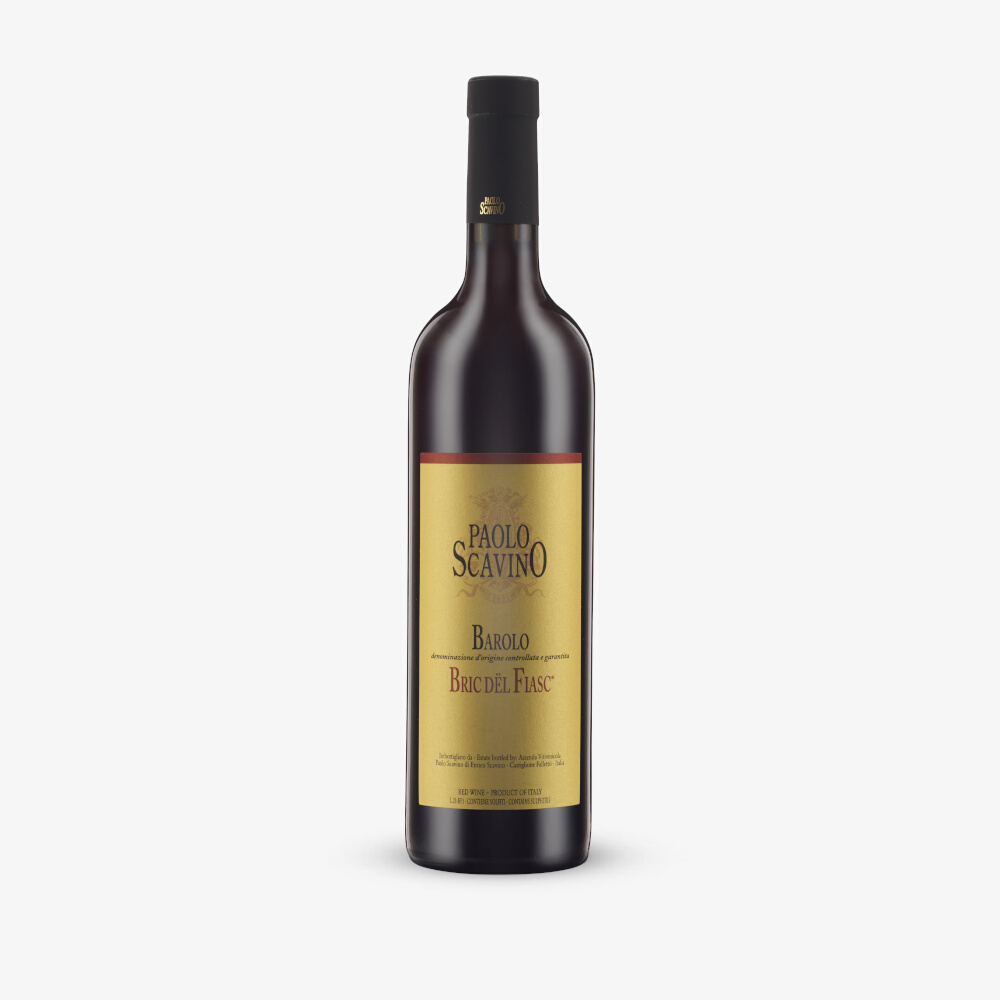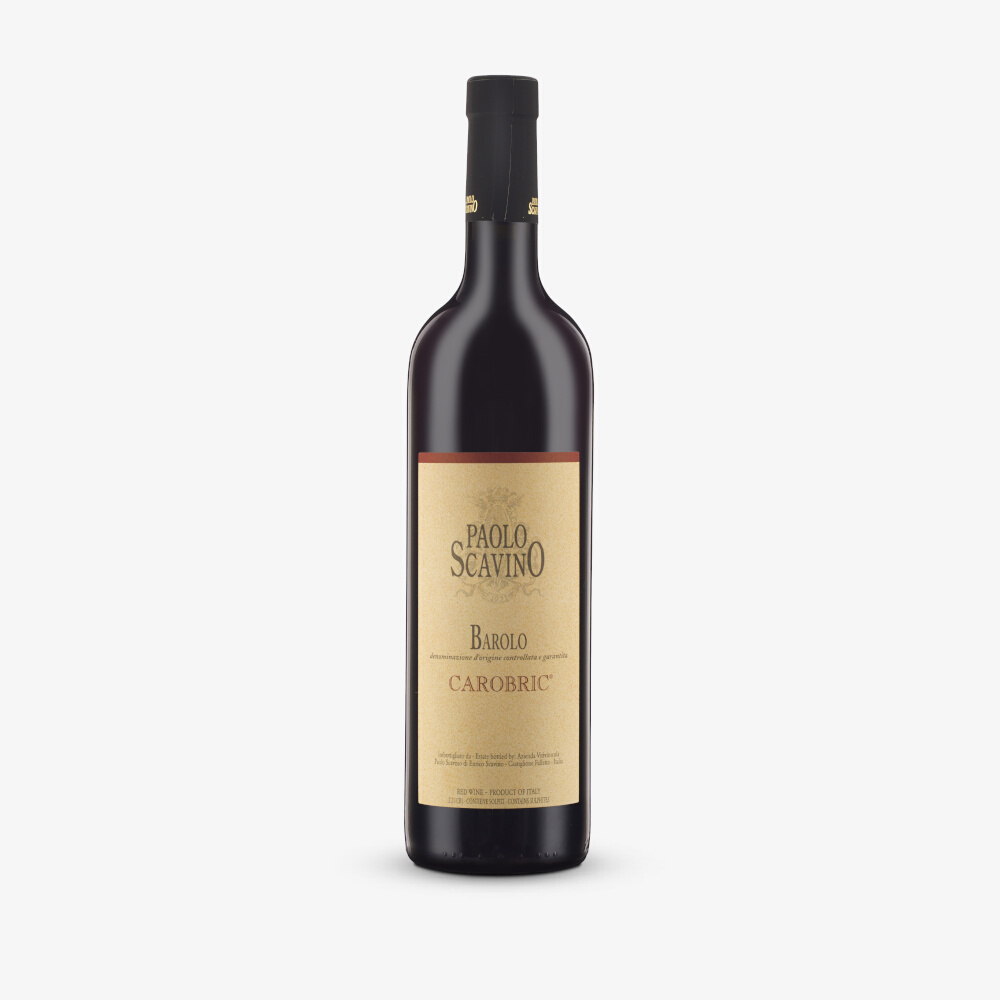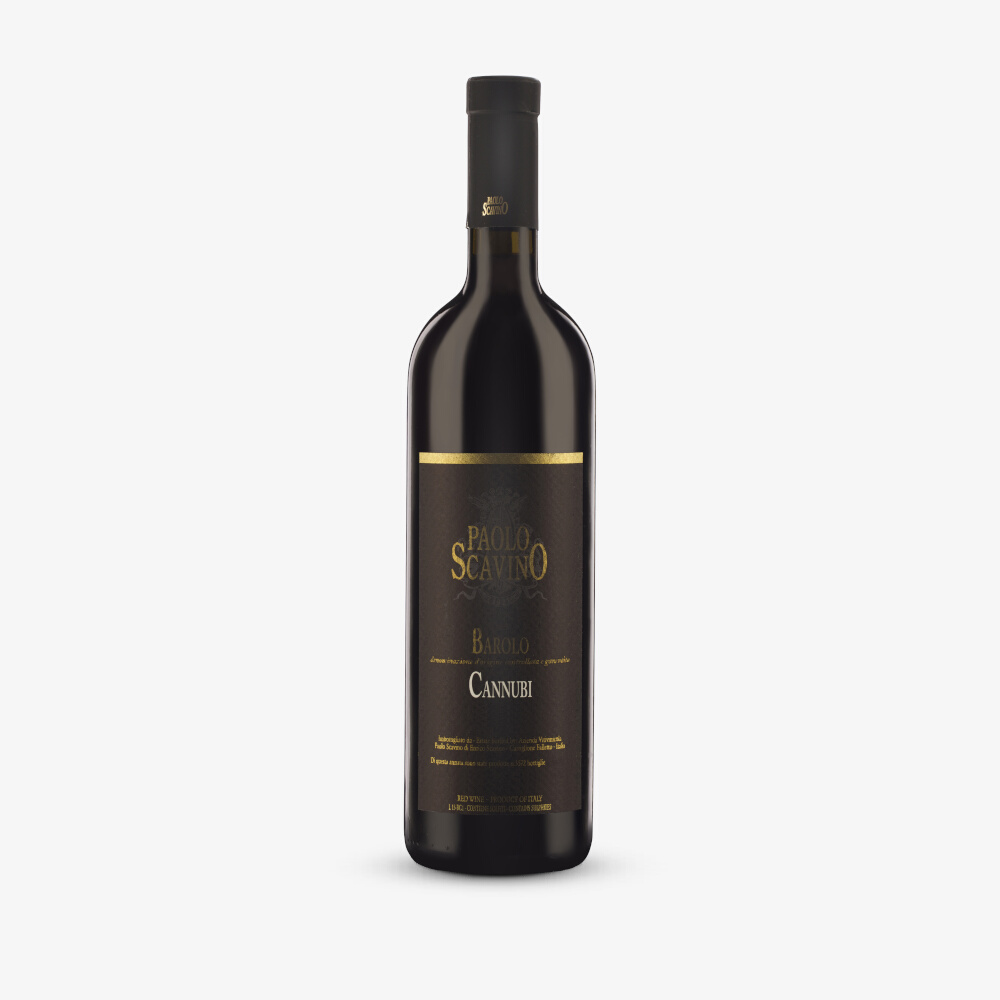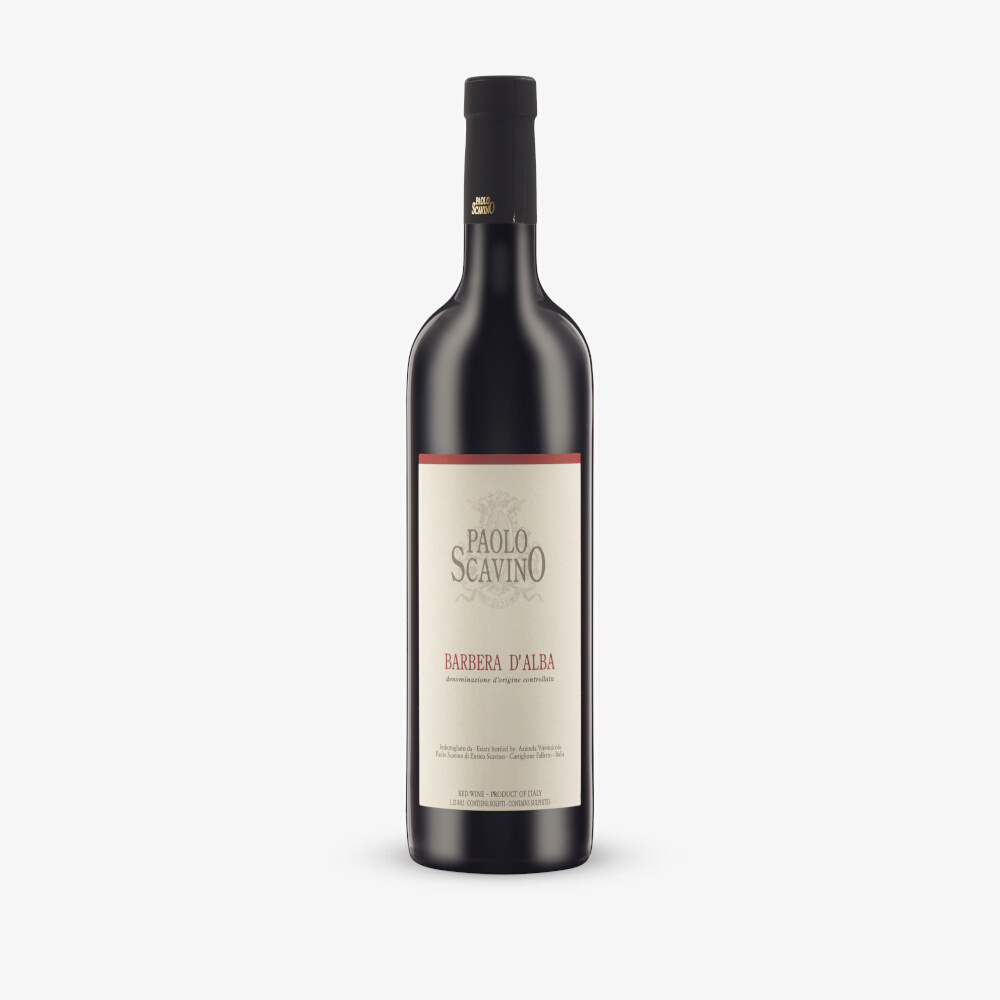
Paolo Scavino
One of Italy’s great estates with holdings in some of Barolo’s finest Crus: Cannubi, Monvigliero, Bric del Fiasc, Ravera, Prapo, Bussia, Bricco Ambrogio, Rocche di Castiglione and Rocche dell’Annuziata. Along with Elio Altare, Enrico Scavino played a huge role in developing the reputation Piedmont has today. Since the 1980s he crafted benchmark, “modern” Barolo. Through meticulous vineyard work, fermentations and finishing in a mixture of French oak barriques and the larger traditional ‘Botti’ casks, Enrico made a name for svelte wines whose polish and sophistication enhance rather than shroud their character and typicity. It was a sad day for Italian wine when news came that he had passed away in early 2024.
Thankfully, daughters Enrica and Elisa Scavino have been running this great estate for a long time, so succession plans were already well-executed. Under their watch they have built on their father’s legacy, while making a series of gradual but considered changes that now arguably have made the Scavino wines better than ever. We hugely admire their adaptability and innovation in the pursuit of quality, even if it makes getting to grips with the specifics of the range an increasingly hard task each year! Work in the vineyard follows Enrico’s principals – a major element of which means reducing yields for optimum ripeness and quality, with a sustainable approach to farming and minimal use of herbicides and pesticides.
In the cellar, a number of small but collectively important developments have been instigated since 2016. The first is that fermentations are carried out in a more even mix of stainless steel and wood, adapted according to site and volume, to the extent that their stock of large vats has grown from two in 2016 to more than fifteen today. Reducing the temperature and carrying out fewer pumpovers during the vinification are further tweaks to improve the perfume and manage tannin extractions – “some years support a wilder profile, others less.” The Barolos are now aged almost exclusively in large traditional casks, and they are moving closer to 20 months in oak (the origin of which is being more closely paired to the profile of the wine) instead of the usual 22-23 months “in the direction of having fresher wines going in to the bottle.”
Wines of Paolo Scavino
Bric del Fiasc
The Bric del Fiasc is at the very top of the Fiasco vineyard which has a southwest exposure and sits at an altitude of 280 metres. The soil is predominantly sandy with marl, often blue to whitish on the surface, with some sandstone and a little clay in parts. It sits on a geological belt called Marna di San’Agata fossili, locally known at töv, or Tufa.
Elisa Scavino describes Bric del Fiasc as “a synthesis of all our crus in many ways. It’s where it all started in 1978. For me, Castiglione Falletto is the village that is the most complete of all the communes. A perfect harmony and balance.” Limestone-driven soils means great freshness here while the sandy topsoil helps with drainage, so Bric del Fiasc is rarely excessive in production or profile.
The Scavinos own 2.8ha in the centre of the vineyard, facing south west. Bric dël Fiasc is Piedmontese dialect for Bricco Fiasco, the top of the Fiasco vineyard. Situated at 280 metres above sea level in Castiglione Falleto, this is one of the great Crus of the region that makes powerful but classy, age worthy wines. It was the first single vineyard bottling Scavino made in 1978.
Prapò
Coming from less than a hectare in the Prapò vineyards, from which only five producers draw their fruit. It's a beautiful plot at about 1,000 feet in altitude and with a full southern exposure, producing some very meaty fruit with a high phenolic presence, as the color is darker and there is more perfume.
The Scavino family bought this plot in 2008 and let the land rest for two years before they replanted. The goal, they said, was to steer away from more productive clones in favor of those that wouldn't take away too much from the quality. They took wood from the mothership vineyards in Bricco Ambrogio for this experiment, grafting them onto the rootstocks they carefully selected. The result is a soft and delicate Barolo with a lot of personality to go along with its firmness and power.
This is an easy cru to recognise. Enrico Scavino said they could have waited longer for this experimental harvest, but they felt the time was right, explaining that "this work is all about feelings and instincts.
Bricco Ambrogio
A vineyard close to the Scavinos’ hearts, they bought in to the relatively unknown Bricco Ambrogio in 2002 and have expanded their holdings from 5ha to 7ha. The top cru of the lesser-known commune of Roddi, a very windy terroir exposed south east and planted at 150 metres above sea level. Aged for one year in large oak ‘botti’ and one year in barriques with a maximum of 10 percent new wood.
Monvigliero
The prized 0.8ha that the Scavinos own in this great site was bought at the same time as Bricco Ambrogio, in 2002.
From a fine limestone, marl and influenced vineyard at 310 metres altitude in the Verduno commune with a south / south east exposure with a special micro climate close to the river where there are big day /night temperature differences. This yields a wine that is equally floral, mineral, smooth and powerful. Aged for one year in large oak ‘botti’ and one year in barriques with a maximum of 10 percent new wood.
Ravera
3ha of 35-40 year old vines in Ravera which, at 430 metres altitude, is their highest vineyard and the last to be harvested. A cool and windy terroir that faces east from which only 6000 bottles are produced, the rest is sold in bulk. Aged for one year in large oak ‘botti’ and one year in barriques with a maximum of 10 percent new wood.
Barolo, Carobric
A blend of three top crus, Cannubi, Rocche and Bric del Fiasc, aged the same way as all of the other wines, for a year in barriques and a year in large oak ‘botti’.
Barolo, Cannubi
Planted 1946. A small parcel from which only 300 cases are produced. This is what the Scavinos call “Cannubi Cannubi”. (Their parcel is at the very heart of the Cannubi vineyard at the top of the hill where the mother rock is close to the surface. Soils are blue marne, limestone and sand. Shallow and rocky with a south-east exposure situated at 290 metres above sea level, this terroir makes for a wine combining silky fruit and powerful structure.) The first vintage Scavino bottled was 1985, the vines were planted in 1946 with the low-yielding.
Barolo Classico
In a list awash with “Grand Crus”, a wine of theirs that is often overlooked, mistakenly in our view, is the humble Barolo Classico. A blend of seven single crus from the prized Barolo, Castiglione and Serralunga communes, it brings together the best of the estate’s vast experience and delivers much immediate enjoyment.
Aged for a year in small barrels in just 15% new oak before a further year in traditional “Botti Grande”
2015 Vintage
It is quite a year for Scavino with two stunning new debutants making an appearance, Prapo and Ravera, and, in their own words,* “An amazing 2015 vintage”* to offer. The wines have proved surprising to the Scavinos “it is incredible how approachable the wines are so early in life because we also consider this a vintage to have a great ageing ability.”
Overall it was a warm vintage but importantly the peaks in temperature were never too high. Warm but regular and helped by the snowy winter that ensured water reserves were there.
2016 Vintage
According to Enrica Scavino, 2016 is “the vintage that producers all dream of. Winter was quite late, there was lots of rain in March and April, so Spring started around May. Summer weather was warm but not extreme, and the weather kept steady until the beginning of November. There was a slow but perfect maturation. Harvest finished on the 20th of October.”
An excellent vintage here that marks the beginning of a turning point in the estate’s history. 2018 is the last vintage before Scavino’s Cannubi lease ran out, this will not only mean no more Cannubi but also the Carobric into which some of the Cannubi was being blended. As of 2016, less of both wines are being released in the market so that the Scavinos can bolster library stocks.
On a significantly more positive note, however, Elisa Scavino began some interesting and exciting trials in 2016 with open top, tronconic wooden fermentation vats. The guinea pig was Ravera, half produced in this new but traditional way and half with the more typically Scavino roto-fermenters. The results are extremely promising, yielding a wine of great vitality and translucency.
The experiment has been rolled out across the other crus for subsequent vintages, so watch this space. So despite the eventual loss of Cannubi, great new crus such as Prapo and Ravera coming on stream, combined with the drive and fresh perspective the two Scavino daughters are now bringing, this is an estate that looks set to rise to an even higher level.
2017 Vintage
2017 was a small but “beautiful” vintage at Scavino. Crop loss was significant due to a mixture of late April frost, which unusually affected hillside sites as well as lower terrain, and of course, the drought that was such a feature of the 2017 season. Winter had been mild, and budbreak was early, so the production was particularly vulnerable to the frost that eventually materialised.
The warm, dry summer that followed meant that the vine was in danger of stress, so the Scavinos still carried out some green harvests, despite the small crop, to lighten the load on the vineyards. This intervention, and the fresher nights that differentiated the year from the persistently hot 2003 season, refreshed and sustained the vines through to vintage. Harvest date was anticipated (the Barbera was picked on the 29th of August, unusually early) as soon as the Scavinos sensed the vine was entering survival mode, when it shuts down and starts to draw water back from the fruit.
They preferred to do this rather than wait for even fuller phenolic maturity, whilst the berries were still pristine and fresh. Elisa describes the results as “beautiful,” adding they are “perfumed and floral with lots of expression, the colours are more delicate than 2016, the structure is about finesse rather than big austere tannins. They have a freshness that is a combination of acidity and tannin. There is a nice concentration, finesse, and elegance to the wines.”
Although acidities weren’t quite as high as 2016, they were good nonetheless and were surprisingly stable from fermentation through to bottling. Key factors in achieving this were the fresh summer nights, an early picking, and also the fact they avoided rain before harvest, which can dilute grapes but also dramatically increase the uptake of acidity-lowering potassium, particularly when the vines are thirsty after a dry summer.
Inspired by brilliant bottles of ‘67, ‘70, and ‘71 vintages made by their grandparents, Elisa and Enrica began experimentation with traditional fermentations in wood with the Ravera cuvée in 2016. Impressed with the results, they extended this trial for 2017 with the purchase of five extra vats, employing this technique across half of the crop of their biggest cru, with traditional two-month post fermentation on the skins. Judging by the quality of these 2017s and by the enviable array of vineyards at their disposal, Elisa and Enrica look set to cement Scavino’s place in the modern-day pantheon of great Barolo producers.
2018 Vintage
Paolo Scavino has turned out some beautifully fragrant, elegant, and seductive 2018s that are instantly likeable; in the words of Elisa Scavino, "they are light, bright, aromatic, and soft; they remind me a little of vintages like 2012, 2011, and 2005." Pure pleasure wines that will gratify Nebbiolo lovers for 10-20 years.
Success was not easy, though. Spring and early Summer were wet, and fighting against disease pressure in the vineyards was hard going. Hot weather arrived in July and lasted until early harvest, then the rain came back, and the Scavinos stopped picking until the vines dried, and the rest of the fruit finished ripening. Picking had eventually finished by the 20th of October; it was a long harvest that resulted in wines of silky ripe tannins and red fruit profiles. Selections and green harvests meant a crop reduction of 30%; to make matters worse, a moth attack in Serralunga meant that no Prapo was made.
There is often a price to pay for quality! Very sadly, 2018 also sees the Cannubi and Carobric cuvees take one final glorious bow. A long lease in Cannubi that was first signed in 1985 has finally come to an end. The two 2018s, high-toned and unerringly elegant, represent a fitting final tribute.
2019 Vintage
Elisa Scavino was effusive. “2019 is a super classic, benchmark vintage for Barolo. A jewel of a vintage. We had a long growing cycle, and the weather was perfect with good winter rains and snow, then March and April were warm, so bud break was early, however, it ended late as we had a cool fresh spring which delayed the timeline. Temperatures peaked at the end of June and early July and remained moderate for the rest of the summer into September. Good acidity, good tannin, but a slightly lower yield owing to the colder May during flowering. The berries were small with a good skin to juice ratio as they did not experience any excessive warmth or water compared to 2018 for example. Everything was in proportion.”
The past few years have seen a number of incremental changes at Scavino as experimentations with large format oak for fermentation and ageing have come to fruition in several cuvees, but perhaps most interestingly is their goal to bottle the wines a little earlier than in the past, giving the wine more time in bottle before release rather than tank. With that, they have abandoned all cold stabilisations and eschew new oak altogether.
2018 saw Cannubi and Carobric bow out of the Scavino range with style, and from now on, the range is a neat collection comprised of a Barolo Classico blend and six single crus, one of which is the Riserva Rocche dell'Annunziata, which is only produced in the best vintages.
2020 Vintage
Enrica and Elisa Scavino have delivered a remarkable 2020 vintage. We left feeling that the wines are more finely carved, tactile, and precise than ever – here a floral kick, there a sinewed grip, Nebbiolo on the beat. Elisa describes 2020 as “a vintage of quality and quantity – perfumed – not austere or overly powerful, a beautiful interpretation of Nebbiolo. It is not a vintage of huge concentration but elegance.”
Followers of Scavino will know that their lease on Cannubi came to an end in 2018, bringing a 32-year affiliation with the site to a close. With it went Carobric: a trademarked name that referenced its constituent parts; Cannubi-Rocche di Castiglione-Bric del Fiasc. Happily, the Cannubi story now turns a page, as 2020 sees the release of Rocche di Castiglione as a standalone wine – even if just 800 bottles were produced.
In the cellar, several small but collectively important developments have been instigated over the past five years. The first is that the wines are now aged almost solely in large cask for two years – just offcuts and experiments going into barrique. Fermentation is in a more even mix of stainless steel and wood, adapted according to site, to the extent that their stock of large vats has grown from two in 2016 to fifteen today.
Reducing temperatures and carrying out fewer pumpovers during the vinification are further tweaks to improve the perfume – “some years support a wilder profile, others less.” Lastly, they are moving to 20 months in oak (the origin of which is being more closely paired to the cru) instead of 22 months, “in the direction of having less evolved, fresher wines going into the bottle.” If all that wasn’t enough, a very grand-scaled, aristocratic Barolo Riserva 2016 hits the shelves – one of the best wines we tasted on our trip.
2021 Vintage
An estate on an amazing run of form, sisters Elisa and Enrica are proud to build on their father’s legacy and take the Scavino name to new heights. We hugely admire their adaptability and innovation in the pursuit of quality, even if it makes getting to grips with the specifics of the range an increasingly hard task each year! What was no hardship though, was tasting through this exceptional collection of 2021s, including the all-new Bussia Fantini, marking the family’s return to Monforte d’Alba after a thirty-year hiatus. Elisa shares our enthusiasm for 2021, stating that “it is often in practice very difficult to combine power and elegance, but this is a vintage that truly offers both. The quality of 2021 was clear right from the beginning.” Likening the vintage to a mix of 2013 and 2016, she felt that for Scavino the wines this year have a bit more fruit richness than 2019, which they picked on acidity. Two fantastic vintages that are represented here with the release of the Riserva Rocche dell’ Annunziata 2019 – the first since 2016. Elisa thinks the Riserva is “the best wine we have ever made.” In the cellar, several small but collectively important developments have been instigated over the past five years. The first is that the wines are now aged almost solely in large traditional casks for two years. Fermentation is in a more even mix of stainless steel and wood, adapted according to site, to the extent that their stock of large vats has grown from two in 2016 to fifteen today. Reducing temperatures and carrying out fewer pumpovers during the vinification are further tweaks to improve the perfume and manage extractions – “some years support a wilder profile, others less.” Lastly, they are moving to 20 months in oak (the origin of which is being more closely paired to the cru) instead of 22 months “in the direction of having fresher wines going into the bottle.”

















